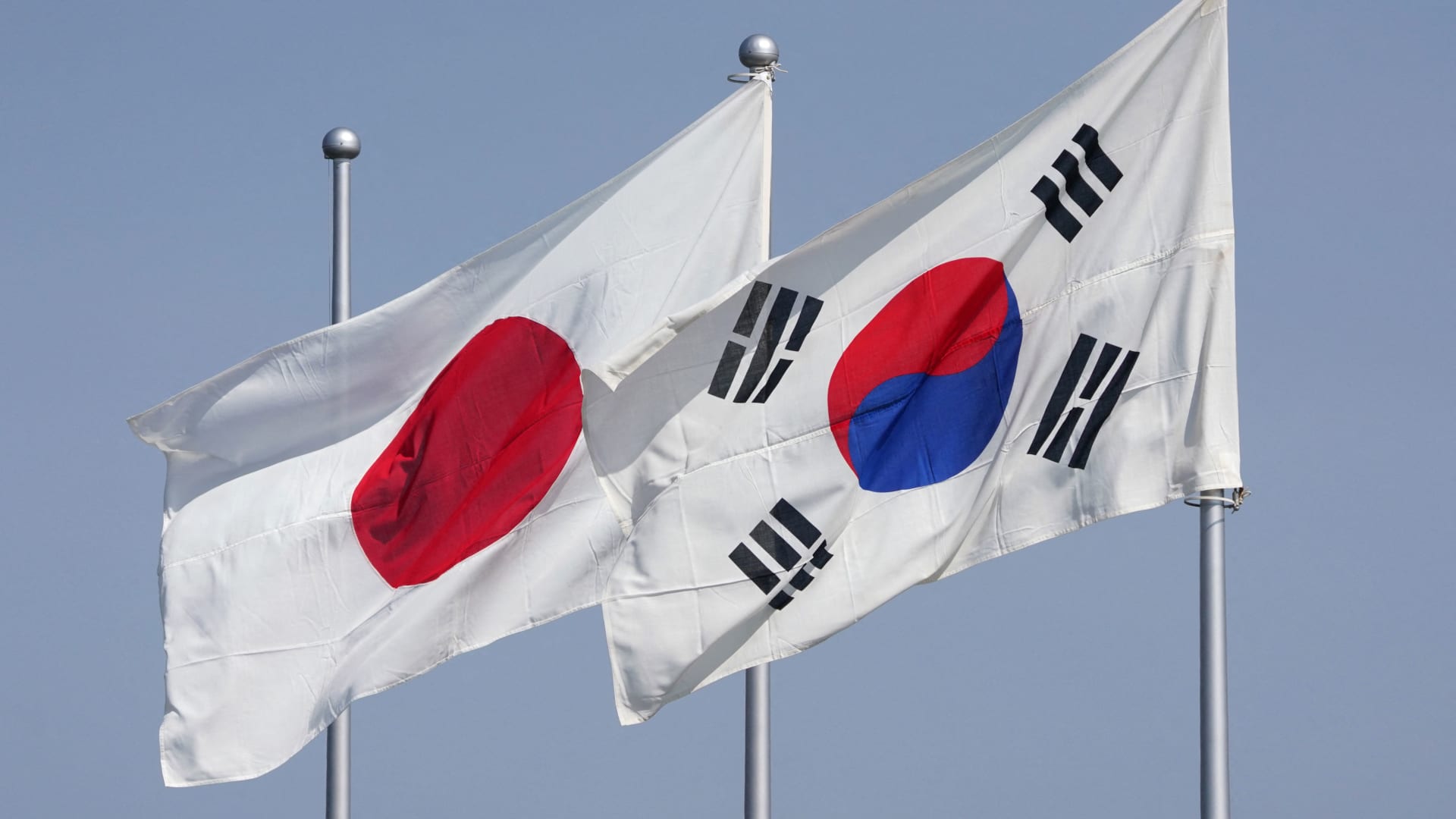
China has so far not acted in an aggressive manner toward shipping in the South China Sea, but the very potential of action creates a clear threat to the economies of Japan and South Korea.
Kazuhiro Nogi | AFP | Getty Images
The following commentary is from Kevin Klowden, chief global strategist of Milken Institute.
News coverage of the weekend’s Group of Seven meetings focused on Ukraine, but China’s rising global presence was the other big topic on the G7 agenda. For two of East Asia’s biggest economies, in particular, the implications of that rise are critically important.
China wants to be the great military and political power of East Asia. Nowhere is that more evident than in President Xi Jinping’s “nine-dash” declaration, through which Beijing claims sovereignty over almost all the South China Sea. And of all the countries with cause to be concerned about that claim, perhaps none have more on the line than Japan and South Korea.
Most of the world is focused on the resource and military implications of Chinese claims to the islands in the region, and Beijing’s development of what is becoming the world’s largest navy. For Japan and South Korea, the threat to their supply chains and energy imports is a far more real and present issue.
In particular, Japan and South Korea are concerned about Chinese declarations which invoke not only the right to inspect cargo, but also the ability to restrict traffic. Neither Japan nor South Korea has any political interest in the ownership of the Spratly Islands, or in China replacing the United States as a dominant naval power. However, they have a strong economic stake in moving their energy imports and manufacturing components without fear of restriction. Even in a non-wartime situation, China has taken the position that the South China Sea is a controlled territory rather than open international waters under Chinese guardianship.
China has so far not acted in an aggressive manner toward shipping in the sea, but the very potential of action creates a clear threat to the economies of Japan and South Korea. China wouldn’t even have to directly stop vessels — it could merely electronically track specific cargo, or carry out inspections or diversions. Such actions would raise the specter of unpredictability and significantly rising costs.
For Japan and South Korea, the role taken by the United States in the post-World War II period was far less disruptive, not only because of their alliance but, more importantly, because the United States acted as a guarantor of free trade and protected movement through the corridor.
Linking the two countries to trading partners in Southeast Asia, India, and beyond is going to increase rather than decrease in importance.
Kevin Klowden
Milken Institute
Few people outside Japan or South Korea focus on or understand just how significant the South China Sea is when it comes to regional and even global energy supplies. Significantly, the sea is estimated to carry 30% of the world’s crude oil, supplying China and providing a vital lifeline for the energy-dependent economies of South Korea and Japan.
For Japan, the 2011 Tohoku earthquake and subsequent nuclear accident at Fukushima only exacerbated that dependence. The resulting curtailment of Japan’s nuclear program has left the country dependent on energy imports, with as much as 98% of Japanese oil coming from the Middle East.
In many ways, South Korea is even more dependent on energy imports than Japan, making oil and natural gas imports especially significant.
The South China Sea is important in more than just energy. It also serves as a key passageway for Japan and South Korea’s global supply chains. Estimates suggest that the sea carries between 20% and 33% of global trade; for Japan, that figure reaches as much as 40%.

As global supply chains regionalize, the role of the South China Sea in the Japanese and South Korean economies will only grow. Linking the two countries to trading partners in Southeast Asia, India, and beyond is going to increase rather than decrease in importance.
Japan and South Korea have been able to rely on the stability of the South China Sea as a conduit for driving their economic growth, even as the global political situation has changed over the decades. Significant shifts, including the Vietnam War and the end of the Cold War, haven’t stopped trade in the sea from growing more and more important.
As the United States balances commitments in Europe, Asia and elsewhere, the three strongest economies of East Asia — China included — all have a vested interest in ensuring the stability of trade, supply chains and energy flows.
For South Korea and Japan, trade remains stable in the South China Sea for now. But with China increasingly looking to assert itself and change the status quo in its favor, it’s essential that both countries ask themselves: How much are they willing and able to concede to China in the region before it becomes untenable? And are they prepared with alternatives that will allow them to compete economically?
Knowing the answers to those questions and being prepared for a more Chinese-dominant future in the South China Sea is important for all three countries — even if the status quo holds for now.
